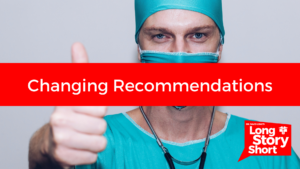Health Insurance Summary
• Dr. David Long discusses how to make the most of your expensive insurance by knowing where to go for healthcare and taking advantage of preventive care.
• He suggests that patients with urgent care needs visit a regular clinic rather than an emergency room, as this is more affordable and cost effective.
• He also advises patients to ask around for the best price on lab work and imaging, as these services can be expensive when done through a hospital system.
• Finally, he reminds viewers that preventive care is important and mandated by the Affordable Care Act – it saves money in both the short term and long term.
Full Text
There was a time when I was really excited about the affordable care act, thinking that it was going to make healthcare finally affordable for so many more Americans, and while that might be true for a small subset of Americans, as it turns out, it really inflated the prices of insurance for so many other Americans, including me and my family.
I’m Dr. David Long. I’d like to take a few minutes to discuss with you health insurance and how to make the most of your expensive insurance. These days health insurance is so expensive. We want to be really careful to make the most of it, to not spend money unnecessarily. One of the ways that we can be careful about that is know where we’re going for healthcare.
A lot of times you have something that pops up, whether it’s a sprained ankle, a strep throat, a laceration, and you think, should I go to my regular doctor’s office? Should I go to an urgent care center? Or what about these places on the corner that looked like a clinic but are actually emergency rooms? They’re open 24 hours. In today’s market and health insurance, a lot of times the only way we can even afford health insurance for our family are those that come with a large deductible, so you need to know upfront that until you get through your deductible, which may be $1000 to $5,000 you’re going to be responsible for 100% of that bill, so go to the right location.
A lot of times doctors who run regular clinics, regular everyday clinics, seeing patients for annual exams or chronic medical conditions will also leave space in their schedule to accept walk-in patients. That’s the way my clinic runs. We have availability every day for walk-in patients, whether they have broken bones, lacerations, strep throat, asthma exacerbations, headaches. There’s a whole host of urgent care type conditions that can still be appropriately managed in the regular clinical setting.
Then there are true urgent care centers. Now my clinic says urgent care on the side, but a true urgent care center is one that’s open 24 hours usually, and it’s going to be much more expensive than your regular clinic. Third would be the standalone emergency room. These are facilities that were originally designed to make available higher levels of care in rural settings, but it was found that you can put them in urban settings and a lot of times patients like the fact that there’s minimal wait time and they can come in, and get in and get out pretty quickly. But the thing is oftentimes they look like a clinic. They feel like a clinic until you get the bill and you find out that your ankle sprain that you walked into to have treated at what you thought was a clinic, turned out to be $1,500. Or you took your child in for strep throat thinking it was a clinic only to find out later that it was an emergency room.
And since you have a thousand dollar deductible, well that $800 bill from that emergency room is really, really difficult to handle. So I encourage you to know where you’re going. If you can get in to a regular clinic, even if that clinic suggests that they’re open for urgent care patients, that’s the most affordable, most cost effective way to be treated for urgent care issues.
Another really important way to make the most of your healthcare insurance dollars is to know where are you getting your lab work done, where you’re getting your images, ultrasound, x-rays, MRIs. There’s lots of options out there, and a lot of times when we go to a clinic that might be associated with a hospital system, they’re encouraged to support their hospital system. But the problem with that is for some patients it may be much, much more expensive to get their labs or their imaging done through that hospital system than it would have been through one of the private imaging facilities or lab facilities available in the community. It’s not all that different than if you were to have your oil changed at one of the many options out in the community, or if you took your car back to the dealership, you’d likely pay a whole lot more there. It’s the same thing here. So you might ask while you’re at your doctor’s office, if I need an MRI of my knee, certainly I’d like to choose a facility that’s covered on my insurance plan, but I’d also like to call around and find out where I’m going to get the best price.
Because the truth is even if you have a low deductible, it might mean that you’re not paying the full cost of that MRI of the knee or blood work, but the cost doesn’t go away. It gets absorbed by the insurance company, perhaps your employer. So I think it’s best to shop around whether it’s you paying for it out of your deductible or whether it’s the insurance company or your employer paying for it, keeping costs down helps everybody.
And third, and perhaps most importantly, a way to make the most of your insurance dollars is to take advantage of preventive care. The affordable care act mandated that preventive care be covered at a much higher rate by the insurance company than in previous years. What does preventive care mean? Well, that’s the kind of office visit that’s a checkup. You’re not there because you’re sick, you’re not there because you need refills. You’re not there because you’re injured. You’re there to get a good history and physical, perhaps some blood work to be sure you’re as healthy as we think you are. As it turns out, there’s not really a whole lot of cause for an 18 to about a 30 year old who’s otherwise healthy. They don’t go for preventive care very often, but they could. But once we get up in age a little bit, it’s really highly recommended that you get in every year, get a preventive visit to be sure that there’s not something hiding like hypertension or diabetes or high cholesterol. And when we do that, our insurance covers it at a really great rate.
Now you can combine them, you could come in, you need refills for your medications, and perhaps your doctor would also at the same time do a preventive visit. Your insurance cover would cover the preventive visit a hundred percent and then cover the evaluation and management portion of your visit at its normal regular rates. So I really recommend that you make the most of that preventive care portion of your health insurance because it won’t cost you much.
So why would the government mandate that preventive care be covered so well by your insurance company? The answer is it saves money, tremendous amounts of money. What we know is that to pay for a screening colonoscopy so that we can detect and treat colon cancers before they become a problem is much, much, much less expensive than finding out down the line that the colon cancer is already there.
Same goes for breast cancer. Paying for mammograms, saves lives, and saves tremendous amounts of money. There are other things like blood test screening for diabetes, screening for high cholesterol, managing those issues before they become a problem down line. It’s much easier and much cheaper to prevent a heart attack than it is to treat a heart attack. So I would encourage you to make the most of the preventive care that your insurance plan allows, because not only will it save you money in the short term, it could put good years on your life and save you tremendous amounts of money in the longterm.
If any of this sounds interesting to you and you’d like more information, feel free to give us a call.





 and then
and then